 History
History  History
History  Animals
Animals Ten Times It Rained Animals (Yes, Animals)
 Mysteries
Mysteries 10 Devastating Missing Child Cases That Remain Unsolved
 Creepy
Creepy 10 Scary Tales from the Middle Ages That’ll Keep You up at Night
 Humans
Humans 10 One-of-a-kind People the World Said Goodbye to in July 2024
 Movies and TV
Movies and TV 10 Holiday Movies Released at Odd Times of the Year
 Politics
Politics 10 Countries Where Religion and Politics Are Inseparable
 Weird Stuff
Weird Stuff 10 Freaky Times When Famous Body Parts Were Stolen
 Miscellaneous
Miscellaneous 10 Interesting Things Manufacturers Stopped Making and Why
 Gaming
Gaming 10 Funny Tutorials in Games
 History
History 10 Desperate Last Stands That Ended in Victory
 Animals
Animals Ten Times It Rained Animals (Yes, Animals)
 Mysteries
Mysteries 10 Devastating Missing Child Cases That Remain Unsolved
Who's Behind Listverse?

Jamie Frater
Head Editor
Jamie founded Listverse due to an insatiable desire to share fascinating, obscure, and bizarre facts. He has been a guest speaker on numerous national radio and television stations and is a five time published author.
More About Us Creepy
Creepy 10 Scary Tales from the Middle Ages That’ll Keep You up at Night
 Humans
Humans 10 One-of-a-kind People the World Said Goodbye to in July 2024
 Movies and TV
Movies and TV 10 Holiday Movies Released at Odd Times of the Year
 Politics
Politics 10 Countries Where Religion and Politics Are Inseparable
 Weird Stuff
Weird Stuff 10 Freaky Times When Famous Body Parts Were Stolen
 Miscellaneous
Miscellaneous 10 Interesting Things Manufacturers Stopped Making and Why
 Gaming
Gaming 10 Funny Tutorials in Games
10 Catastrophes Caused By Food
When we read about catastrophes, food is usually the last cause we think of. Natural disasters such as fires, floods, cyclones, and tsunamis usually come to mind, or there’s the suffering brought on by drought, war, and famine. Industrial disasters have also been fairly common throughout history, from early factory fires and accidental encounters with dangerous equipment to toxic chemical spills in modern industry.
However, you may not have known that food manufacture can sometimes be a dangerous business. Many of our most common foods are capable of going off with quite a bang under the wrong conditions. Did you know that we have had fires, floods, and explosions caused by some of our most seemingly innocent foodstuffs?
10 London Beer Flood
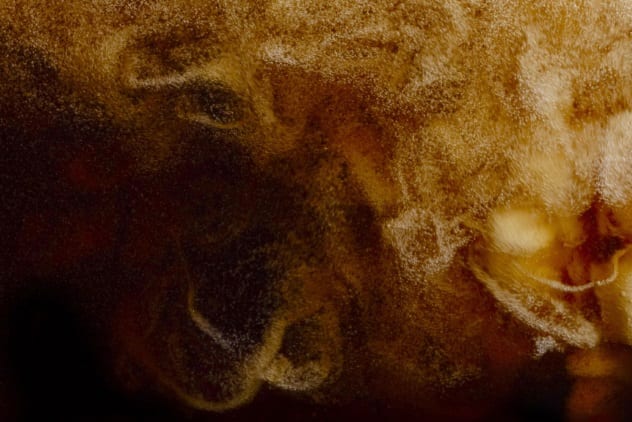
A tsunami of beer may seem like an ale-lover’s dream, something that might even be joked about around the bar. However, it was no laughing matter for residents in one of London’s poorest districts in 1814, when they were inundated with a river of ale.
On October 17 of that year, a vat of beer in the Meux and Co. Brewery suddenly burst when one of the metal rings securing it failed. This sparked a bizarre chain reaction. The vat then toppled surrounding beer kegs, releasing over 1.47 million liters (388,000 gal) of beer into the surrounding neighborhood.
The huge tsunami of ale rushed through the brewery wall, drowning a waiter in the adjoining tavern before flowing down Great Russell Street. While some locals reportedly rushed to enjoy their “free pint,” surrounding homes were extensively damaged. A further seven people were killed in the tidal wave of beer that flooded the area.[1] Most fatalities occurred in a small lane behind the brewery, where residents were trapped by the oncoming rush of beer.
The coroner’s report declared the accident a natural, if not somewhat bizarre, disaster.
9 Boston’s Great Molasses Flood
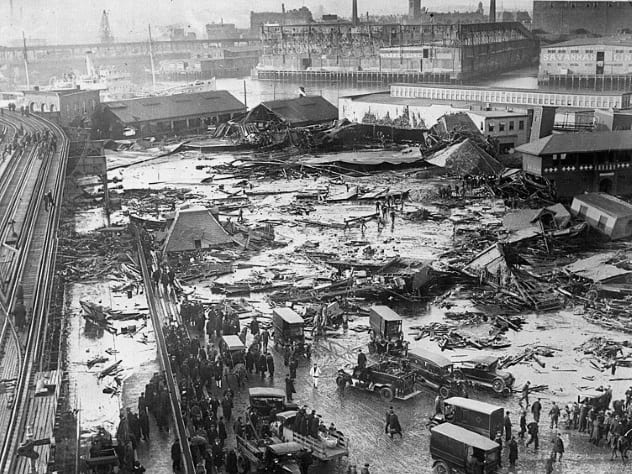
Residents in a Boston neighborhood met with a sticky end in 1919 following an accident at the Purity Distilling Company plant. Unusually warm temperatures caused an 8.7-million-liter (2.3 million gal) tank of molasses to buckle and explode. As the sugary mess flooded from the factory, surrounding buildings were swept away. The flood killed 21 people and injured 150, according to news reports at the time.
A number of buildings were damaged in the initial explosion, and others were damaged by the wave of molasses, adding their debris to the sticky flood, which eventually flowed into the harbor. The explosion was so strong that a section of the nearby Boston Railway was damaged when debris landed on the lines. There were reports that the sickly sweet smell of molasses pervaded the area for months to come.
Investigations concluded that the combination of a defect in the storage tank and the warm weather had caused the explosion. Today, a plaque on Commercial Street commemorates the bizarre disaster.[2]
8 Fruit Juice Flood
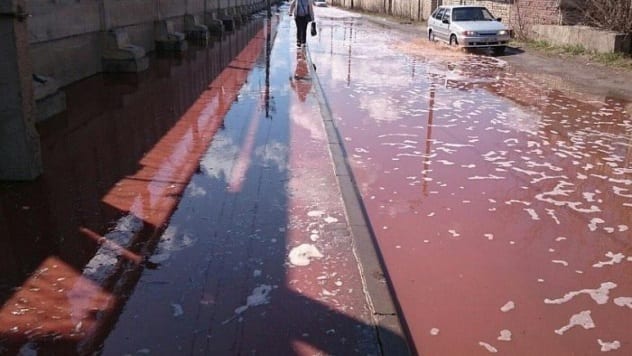
When agricultural prices are low, markets can be flooded with fruit. Farmers often sell their produce for pulp to be made into juice. However, a Russian town was literally inundated with fruit juice following a warehouse accident in 2017.
The roof of the beverage manufacturing plant in the small town of Lebedyan collapsed, injuring two workers. Stocks of packaged fruit juices held in the warehouse were damaged as the roof caved in on the factory. As rescuers attempted to clear the wreckage, several tons of mixed juice stored in the warehouse escaped, flooding the town.[3]
Attempts to contain the sticky torrent of liquid flowing through the streets proved fruitless. The river of juice eventually seeped into the River Don. Fortunately, no lives were lost in the accident. The workers trapped inside the building were taken to the hospital with minor injuries.
7 Tapioca Tanker Disaster

In 1972, a Swiss freighter narrowly avoided sinking after accidentally cooking the world’s largest tapioca pudding in its hull. The Cassarate was transporting a mixed cargo of lumber and grains when a fire broke out in the timber decks in the upper holds. For 25 days, the crews watered the smoldering flames in an attempt to contain the fire.
However, the water seeped into the lower decks, where the cargo of tapioca was held. The water from firefighting efforts, combined with the heat from the blaze, effectively “cooked” the tapioca into a dessert large enough to feed a million people. This caused the grain to swell, threatening to burst the ship’s hull at the seams.
The tanker made an emergency docking in Cardiff, Wales. Here, firefighters continued to control the lumber blaze, before pondering the question of what to do with the 500 truckloads of tapioca pudding.[4]
6 Glasgow Distillery Fire
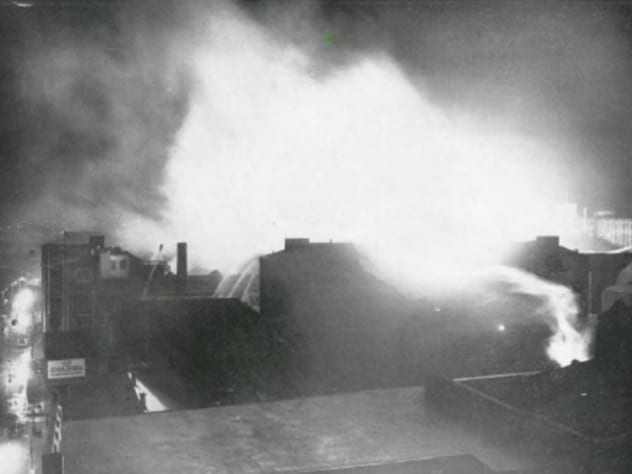
The quality of whiskey was once tested by its flammability. However, this very quality caused one of the worst disasters in modern Scottish history. A Glasgow distillery fire in 1960 saw huge vats of pure alcohol exploding like bombs, showering the surrounding area with debris. As the alcohol-fueled fire raged out of control, blue flames could be from everywhere in the city.
The Arbuckle, Smith, and Co. Limited warehouse on Cheapside Street held over 3.8 million liters (one million gal) of whiskey and over 117,000 liters (31,000 gal) of proof rum. When a fire broke out in the warehouse, the highly flammable alcohol exploded, with the fire destroying a nearby tobacco warehouse and several other buildings.[5]
Over 400 firefighters were called to the scene, which was described as Britain’s worst peacetime fire. As the walls of the bond store continued to collapse, 19 firefighters were killed attempting to control the blaze, which took a week to contain.
5 Norwegian Goat Cheese Fire

Cheese seems like a fairly harmless food, but you may want to be aware of its flammable qualities the next time you are melting cheese on toast. Its combustible properties were put on spectacular show during a Norwegian truck accident.
In 2013, a truckload of Brunost cheese was being driven through the a tunnel in Tysfjord in Northern Norway. The truck driver noticed a fire at the rear of the truck, abandoning his load around 300 meters (1,000 ft) into the tunnel. The high sugar and fat content in the brown cheese caused it to burn “almost like petrol,” sending toxic fumes through the tunnel.[6]
Emergency services were forced to wait until the toxic, cheesy fumes subsided before they could begin recovery operations. The tunnel was closed for several weeks due to damage caused by the bizarre cheese fire.
4 Washburn A Mill Fire
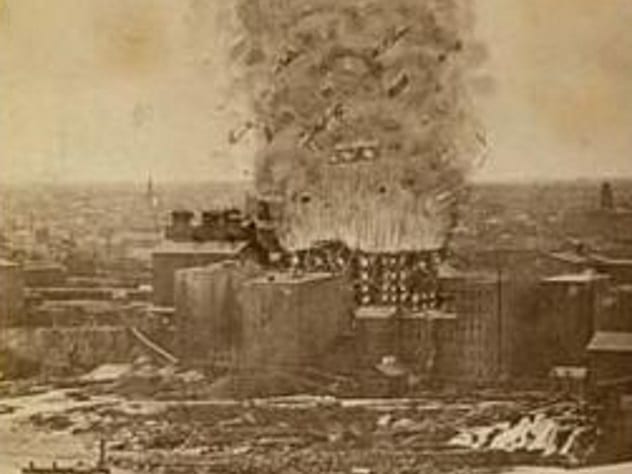
In 1878, residents in Minneapolis were rocked by a massive “flour bomb” as an explosion at a flour mill shook the town, killing 18 mill workers. Fire broke out in the basement of the Washburn A flour mill, the town’s major employer. An eyewitness account at the time tells of watching the fire progressively light up one floor of the seven-story building at a time. Before long, the massive stone building was reduced to a pile of rubble.
The fire broke out during a shift change, with workers having no time to evacuate before the flour ignited, setting off a series of blasts. It took only a matter of minutes for the explosive flour fire to obliterate the building and send debris flying, destroying surrounding mills and killing four more people. Due to the intensity of the explosions, residents in surrounding towns feared an earthquake had occurred.
A coroner’s report concluded that highly combustible flour dust had fueled the explosions.[7]
3 Hawaiian Molasses Spill
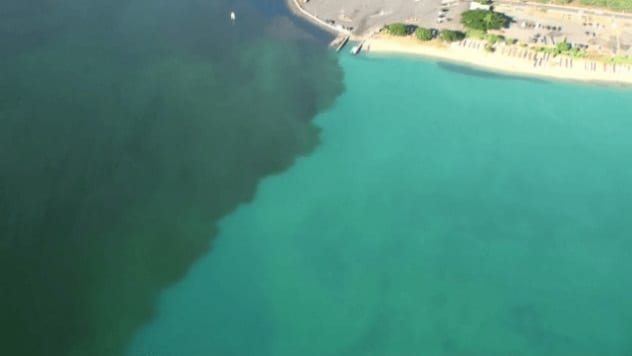
While no one was killed in Hawaii’s brush with molasses, it still caused a sticky environmental issue.
Sugarcane plantations surrounding Honolulu send their produce to be processed and sent to the mainland for sale. In 2013, a leak occurred in a pipeline which was carrying molasses from the sugarcane processing plants to cargo ships waiting in Honolulu Harbor. Over 871,000 liters (230,000 gal) of molasses seeped into the harbor, causing an environmental issue similar to a major oil spill.[8]
Thousands of fish and other marine life began suffocating in the sticky mess. Luckily, the spill proved simpler to rectify than an oil spill. Unlike oil, sugar is soluble in water, so the sticky mess eventually dissipated, and the water quality in the harbor returned to normal.
2 German Chocolate Flood
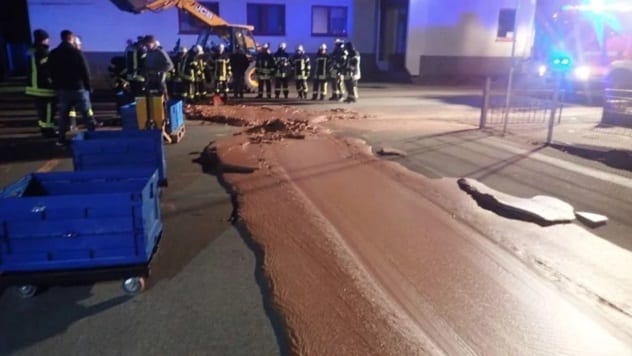
Streets paved with chocolate seem like something straight from a fairy tale. However, it was a reality for residents of the small German town of Westonnen in December 2018.
In a scene from Willy Wonka & the Chocolate Factory, a vat of liquid chocolate in the DreiMeister factory overflowed. Over a metric ton of molten chocolate flowed like a river down the street, solidifying quickly in the brisk winter air. Resident chocolate-lovers were held back from the scene to allow workers a sweet break to clear the hazard.
Roads were closed for several hours as cleanup crews worked with shovels and blowtorches to remove the solidified chocolate from the roadway. Unlike Hansel and Gretel, they were not encouraged to break off a piece of the candy to have a taste. The manufacturer was quick to reassure customers that the incident wouldn’t affect the availability of chocolate for Christmas.[9]
1 Gunnedah Pet Food Explosion
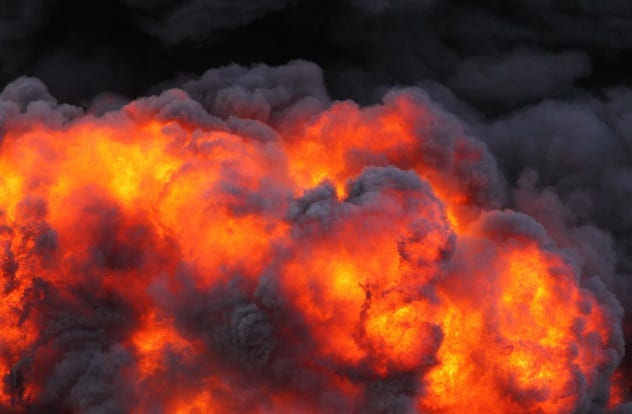
A series of explosions in an Australian pet food manufacturing plant caused in excess of AUD $10 million worth of damage in 2003.
Residents in the rural town of Gunnedah thought they were experiencing an earthquake when a series of explosions shook the town late one night. A boiler explosion in the nearby pet food plant was felt up to 20 kilometers (12 mi) away. More than 30 homes and ten other buildings within the vicinity of the factory were damaged. Windows shattered in the blast, damage was caused by flying debris, and the scene was described as “a war zone.”[10]
Residents reported seeing a mushroom cloud over the plant as the wheat dust used in production caught fire. LPG gas cylinders within the plant continued to ignite, causing ongoing explosions throughout the night as emergency crews evacuated residents and fought to bring the situation under control.
Fortunately, there were no casualties in the explosions, although the building was quickly reduced to a twisted mess of metal girders.
Lesley Connor is a retired Australian newspaper editor, providing stories for online publications and her travel blog.
Read more about the dangerous side of food on 10 Unfortunate Deaths Caused By Food and 10 Foods We Eat That May Lead To Poisoning Or Death.








